
St. Maria im Kapitol: A Romanesque Masterpiece in Cologne
Discover St. Maria im Kapitol, a stunning Romanesque church in Cologne with ancient wooden doors and a unique three-apse choir, reflecting centuries of history and architectural grandeur.
St. Maria im Kapitol, located in the heart of Cologne, is one of the city's twelve Romanesque churches, boasting a rich history that stretches back to Roman times. Founded in the 7th century, the church stands on the site of a former Roman temple dedicated to the Capitoline Triad. Its architecture showcases a stunning blend of Romanesque and Gothic styles, with notable features including the unique three-apse choir and the intricate wooden doors, which are among the oldest in Germany. Visitors are captivated by the serene atmosphere, the impressive scale of the interior, and the numerous art historical treasures housed within, making it a must-see destination for those interested in religious architecture and the history of Cologne. The church provides a peaceful respite from the bustling city, inviting contemplation and appreciation of its enduring legacy.
A brief summary to St. Maria im Kapitol
- Kasinostraße 6, Cologne, Innenstadt, 50676, DE
- +49221214615
- Visit website
Local tips
- Visit during the week to avoid larger crowds and enjoy a more peaceful experience.
- Take time to examine the ancient wooden doors, some of the oldest in Germany, for their intricate carvings.
- Combine your visit with a walk through the nearby Old Town (Altstadt) to experience more of Cologne's historical charm.
Getting There
-
Walking
From the Rathaus (City Hall), St. Maria im Kapitol is approximately a 5-minute walk. Head south along Kleine Budengasse, then turn left onto Kasinostraße. The church will be on your right. This route is straightforward and well-signed.
-
Public Transport
If arriving by public transport, the nearest station is Heumarkt, served by tram lines 1, 5, 7, and 9. From Heumarkt, walk west along Heumarkt towards the Rhine River, then turn left onto Kasinostraße. The church is about a 5-minute walk from the station. A single ticket for a short trip (Kurzstrecke) costs approximately €2.20.
-
Taxi/Ride-Share
A taxi or ride-share from Cologne Central Station (Hauptbahnhof) to St. Maria im Kapitol will take approximately 10-15 minutes, depending on traffic. The estimated fare is between €10 and €15. Ask the driver to take you to Kasinostraße 6.
Discover more about St. Maria im Kapitol
Iconic landmarks you can’t miss
St. Maria im Kapitol
0.0 km
Discover the architectural beauty and historical richness of St. Maria im Kapitol, a stunning Catholic church in the heart of Cologne, Germany.
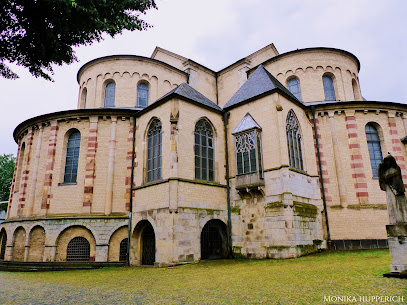
Barockfassade
0.2 km
Discover Cologne's architectural heritage at the Barockfassade, a beautifully preserved Baroque facade from 1696, offering a glimpse into the city's rich past and artistic evolution.

Heumarkt 43
0.2 km
Experience the vibrant heart of Cologne at Heumarkt, a historic square blending medieval charm with modern-day festivities, offering culture, cuisine, and captivating events.

Trinitatiskirche
0.2 km
Discover the tranquility of Trinitatiskirche, a stunning Evangelical church in Cologne, offering serene beauty and rich cultural experiences.
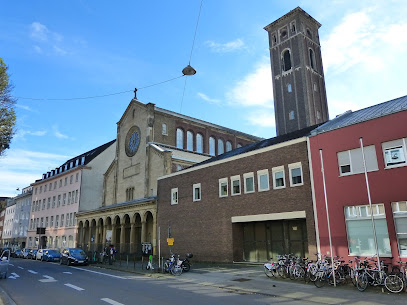
blue heart
0.3 km
Discover the Blue Heart in Cologne, a captivating art installation offering a tranquil escape in the city center, surrounded by historical landmarks and vibrant culture.

Cologne
0.3 km
Discover Cologne: A vibrant city where ancient history meets modern culture, offering iconic landmarks, world-class museums, and a lively atmosphere on the Rhine.
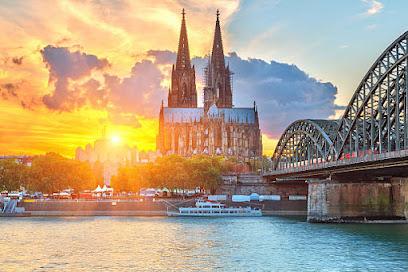
Historisches Rathaus der Stadt Köln
0.4 km
Discover Cologne's Historisches Rathaus, a magnificent blend of Gothic and Renaissance architecture, and Germany's oldest city hall, steeped in history and civic pride, in the heart of the vibrant Old Town.
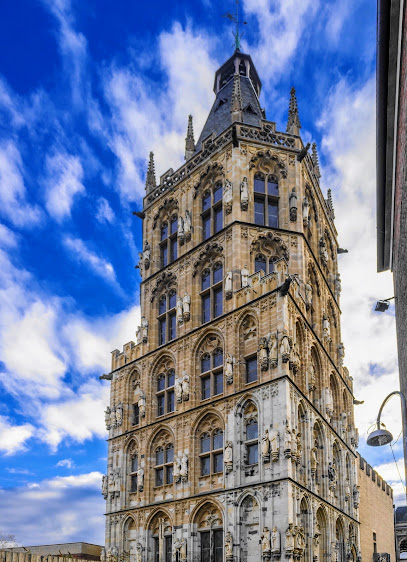
Tauzieher
0.4 km
Discover the Tauzieher, a historic sculpture in Cologne's Rheinauhafen, embodying the city's maritime past and working-class heritage, near the Chocolate Museum and Old Town.
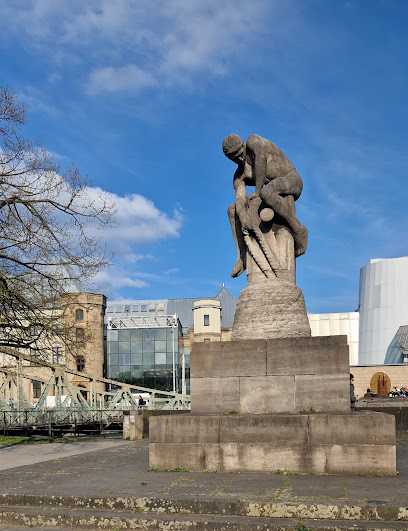
Experience Cologne
0.5 km
Explore Cologne's rich history, stunning architecture, and vibrant culture through expertly guided tours with Experience Cologne, a premier tour agency.
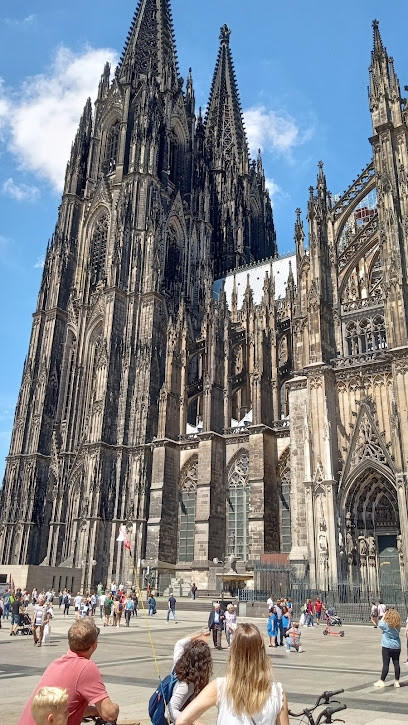
Kolumba
0.5 km
Discover a unique art experience in Cologne's Kolumba Museum, where ancient ruins meet modern design, showcasing art from antiquity to today in a space for contemplation.

Heinzelmännchenbrunnen, Köln - Edmund Renard
0.6 km
Discover the enchanting Heinzelmännchenbrunnen in Cologne, a whimsical fountain that brings to life the legend of the city's industrious house gnomes and their fateful encounter with a curious tailor's wife.
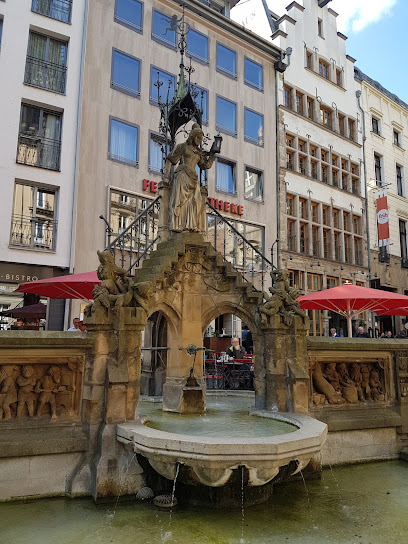
Der goldene Kupferstern
0.6 km
Experience Cologne's vibrant heart at Roncalliplatz, surrounded by iconic landmarks, bustling events, and the city's rich history and culture, offering an unforgettable adventure.
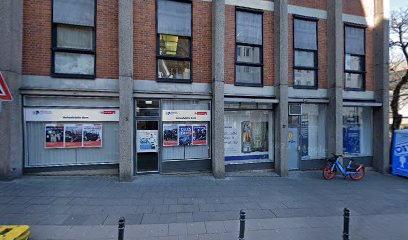
Rheingarten
0.6 km
Experience Cologne's charm at Rheingarten: a scenic riverside park offering stunning views, tranquil pathways, and a vibrant social atmosphere in the heart of the Old Town.
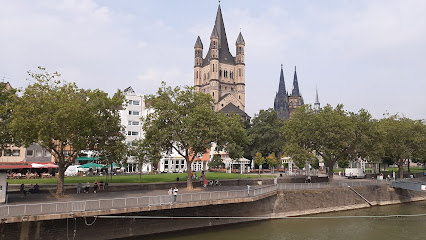
Ancient Roman Harbor Street
0.6 km
Explore Cologne's Ancient Roman Harbor Street: A captivating historical landmark offering a glimpse into the city's Roman past, showcasing its significance as a vital trading hub.
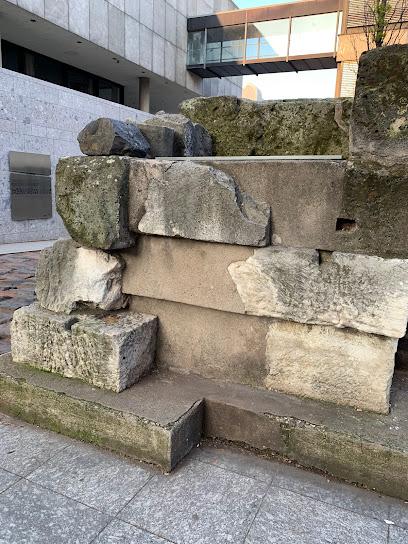
Am Hof 1
0.6 km
Discover Am Hof in Cologne: A historical square where Roman roots meet medieval charm and modern vibrancy, offering a captivating glimpse into the city's rich heritage.
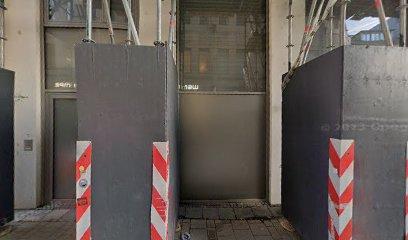
Unmissable attractions to see
Pfarrbüro St. Maria im Kapitol & St. Maria Lyskirchen
0.0 km
Explore the serene beauty of St. Maria im Kapitol & St. Maria Lyskirchen, two architectural gems in Cologne showcasing rich history and spiritual heritage.
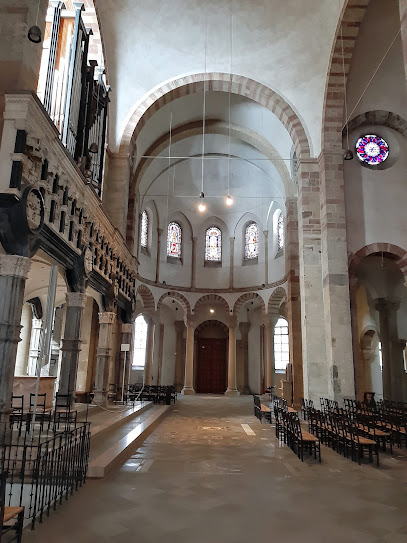
Freitreppe an St. Maria im Kapitol
0.1 km
Discover the beauty of Freitreppe an St. Maria im Kapitol in Cologne, a scenic spot offering stunning views of historic architecture and vibrant local culture.
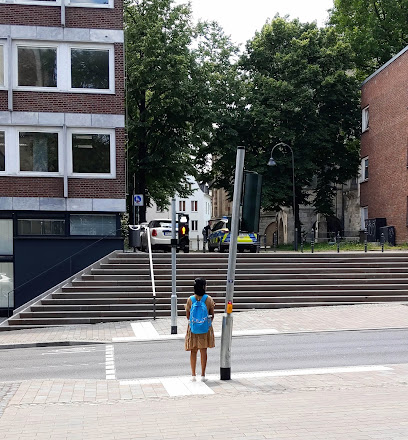
Eingang Basilika St. Maria im Kapitol
0.1 km
Experience the serene beauty and rich history of St. Maria im Kapitol, a Romanesque gem in Cologne's vibrant Kapitol-Viertel, perfect for tourists seeking culture.
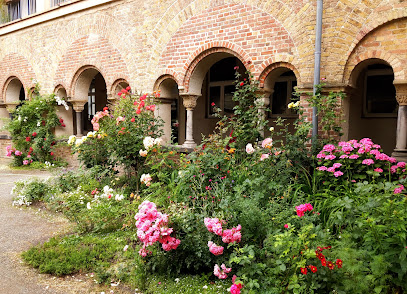
Ubii Monument
0.1 km
Explore the Ubii Monument in Cologne, a historical landmark that showcases the rich Roman heritage and culture of the region.
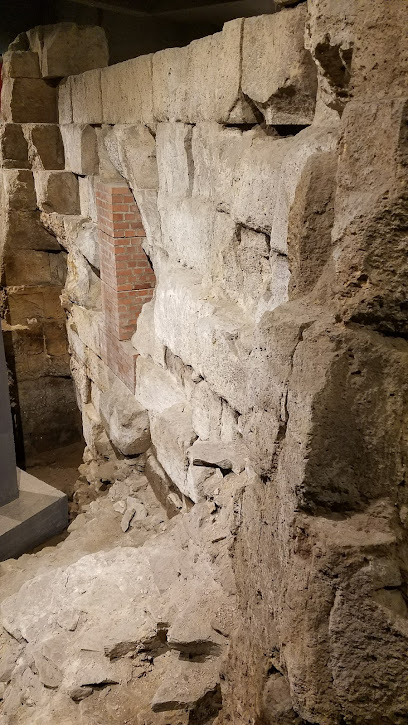
Brauerei zur Malzmühle
0.2 km
Experience authentic German brewing and traditional cuisine at Brauerei zur Malzmühle, Cologne's premier beer hall and restaurant.
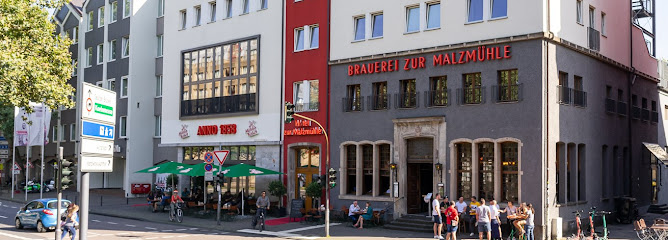
Overstolzenhaus
0.2 km
Explore Overstolzenhaus, a historical gem in Cologne, revealing the city's rich architectural heritage and captivating stories from the past.
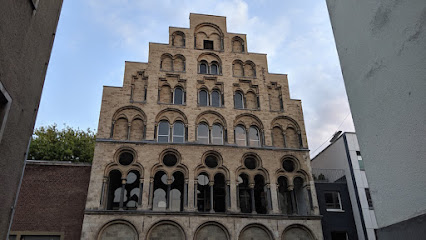
Hard Rock Cafe
0.2 km
Discover the ultimate American dining experience at Hard Rock Cafe Cologne, where iconic rock memorabilia meets delicious cuisine in a lively atmosphere.
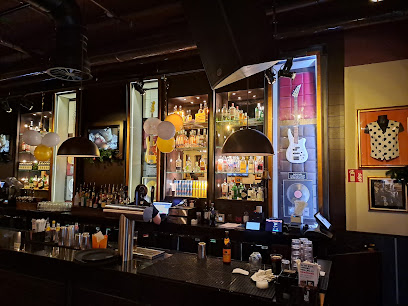
Gürzenich Köln
0.2 km
Discover the historic Gürzenich Köln, a stunning convention center blending rich cultural heritage with modern elegance in the heart of Cologne.
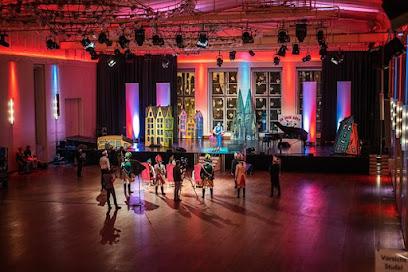
Equestrian statue of Friedrich Wilhelm III.
0.2 km
Discover the Equestrian Statue of Friedrich Wilhelm III, a striking cultural landmark in Cologne's Heumarkt, rich in history and artistry.
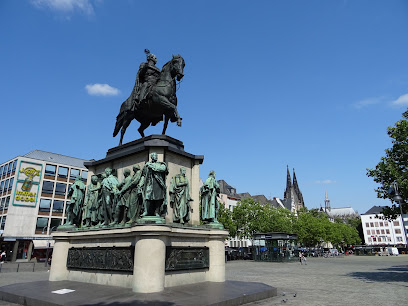
Old St. Alban
0.3 km
Explore Old St. Alban, a historical landmark in Cologne that offers a glimpse into the city's rich architectural heritage and captivating stories of the past.
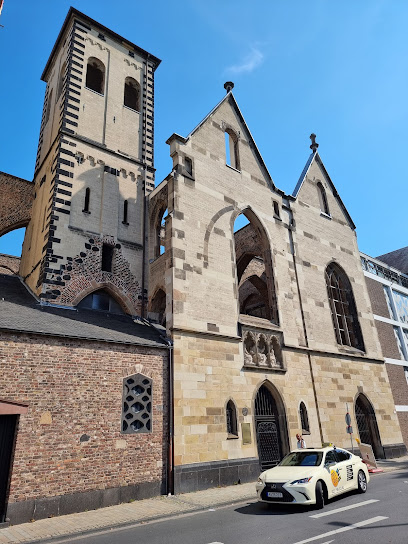
Heumarkt
0.3 km
Explore Heumarkt, Cologne's stunning historical square filled with vibrant culture, remarkable architecture, and delightful local cuisine.
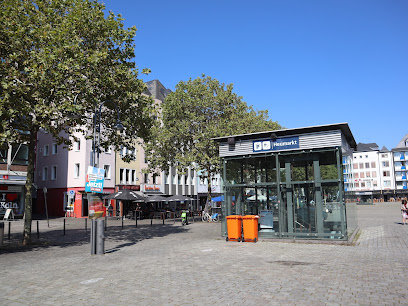
Heinzels Wintermärchen - Weihnachtsmarkt Kölner Altstadt
0.3 km
Discover the enchanting Heinzels Wintermärchen Christmas market in Cologne, where festive treats and handcrafted gifts create a magical holiday experience.
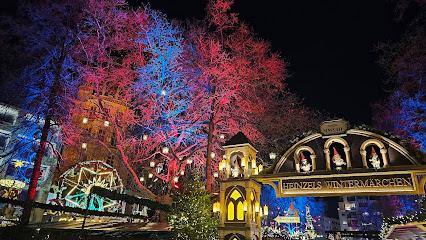
Rheintor der mittelalterlichen Stadtmauer
0.3 km
Discover the Rheintor, a stunning remnant of Cologne's medieval city wall, where history and architecture come together in a captivating experience.
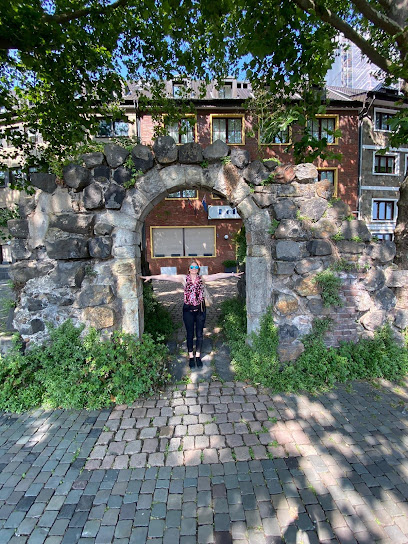
Wallraf-Richartz-Museum & Fondation Corboud
0.3 km
Explore the Wallraf-Richartz-Museum, a cultural gem in Cologne showcasing masterpieces from the medieval to the 19th century, perfect for art lovers.

Brunnen Marsplatz
0.3 km
Discover the charm of Brunnen Marsplatz, Cologne's historical square filled with culture, stunning architecture, and vibrant local life.
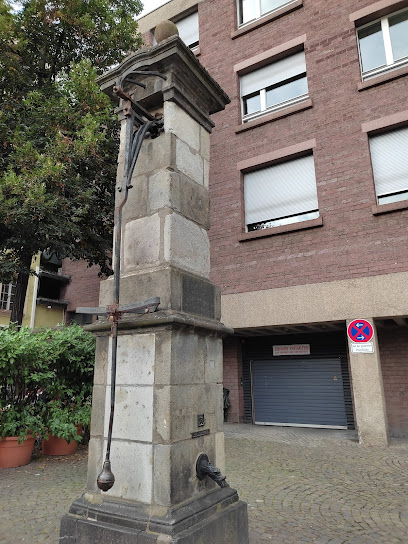
Essential places to dine
Mederrano
0.1 km
Experience authentic Mediterranean flavors at Mederrano in Cologne – where every meal is a celebration of taste.
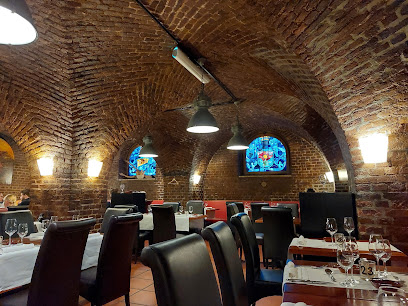
L'Osteria
0.1 km
Discover authentic Italian flavors at L'Osteria in Cologne's Innenstadt—where every meal is a celebration of taste and tradition.

Ristorante il Tartufo - Köln
0.2 km
Experience authentic Italian cuisine at Ristorante il Tartufo in Köln - where every dish tells a story.
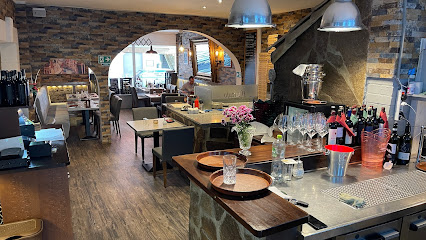
Gilden im Zims “Heimat kölscher Helden”
0.3 km
Discover authentic German flavors at Gilden im Zims, a lively beer hall in the heart of Cologne offering delicious cuisine and local Kölsch.
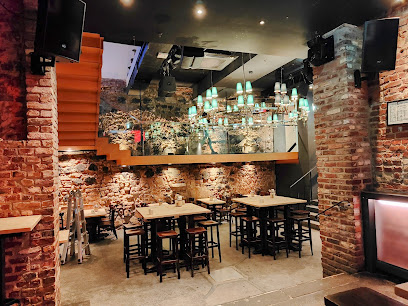
Restaurant Bellevue
0.3 km
Experience exquisite dining at Restaurant Bellevue in Cologne – where culinary artistry meets stunning river views.
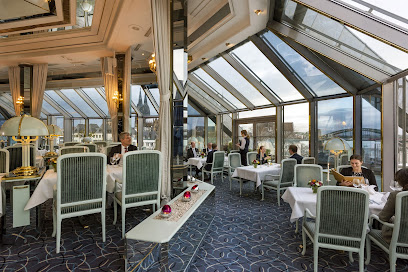
Servus Colonia Alpina
0.3 km
Discover the heart of Bavarian cuisine at Servus Colonia Alpina in Cologne – where tradition meets taste in every dish.
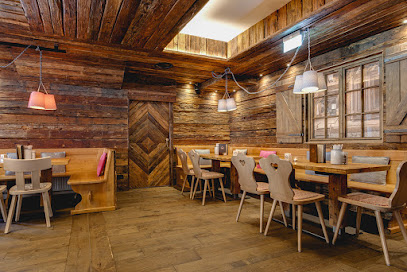
The Small Steakhouse
0.3 km
Experience top-quality steaks at The Small Steakhouse in Cologne - where flavor meets warmth in every bite.

Hänneschen und die Pfeffermühle
0.4 km
Discover authentic German cuisine at Hänneschen und die Pfeffermühle in Cologne—where tradition meets taste.
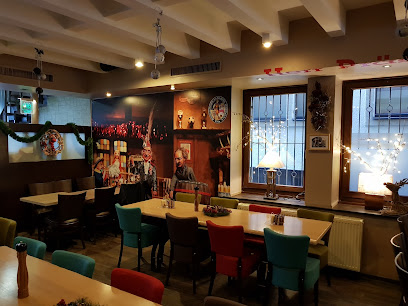
Keule
0.4 km
Experience authentic German flavors at Keule in Cologne - where tradition meets modern culinary artistry.
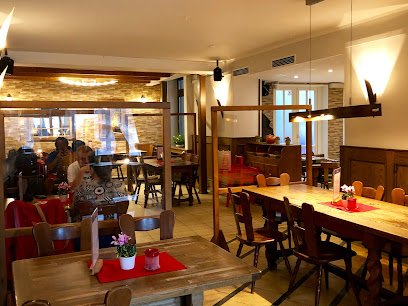
HACIENDA
0.4 km
Experience the vibrant flavors of Argentinian cuisine at Hacienda in Cologne - a perfect blend of tradition and innovation.

Ristorante-Pizzeria Il Valentino
0.4 km
Experience authentic Italian cuisine at Ristorante-Pizzeria Il Valentino in Cologne with delicious pizzas and traditional dishes served in a cozy atmosphere.

Brauhaus Sünner im Walfisch
0.4 km
Experience Cologne's brewing tradition at Brauhaus Sünner im Walfisch – where authentic flavors meet local charm.
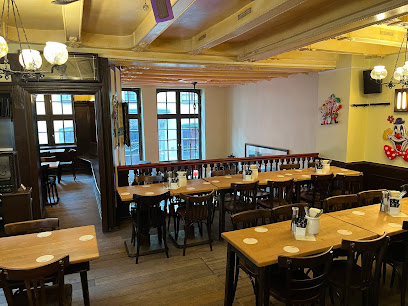
Haxenhaus
0.4 km
Experience authentic German flavors at Haxenhaus in Cologne – where tradition meets taste by the Rhine River.
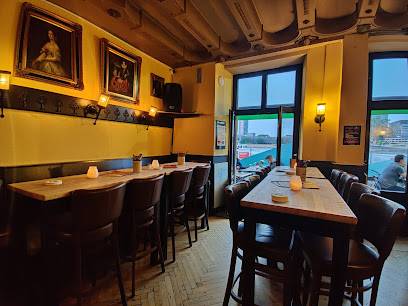
Sahila - The Restaurant
0.4 km
Experience exquisite Mediterranean cuisine at Sahila, Cologne's fine dining jewel offering elegant dishes and delightful desserts.
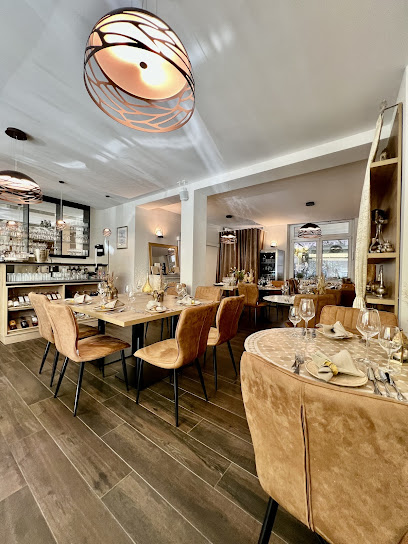
Restaurant Mama Leone
0.4 km
Savor authentic Italian flavors at Restaurant Mama Leone in Cologne – where every meal is a celebration of taste and tradition.
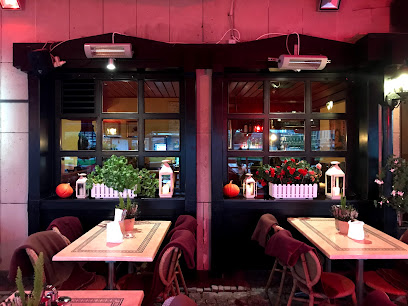
Markets, malls and hidden boutiques
kölnknipse - schöne fotos im quadrat
0.2 km
Explore the heart of Cologne through unique, locally crafted gifts and art at the charming Kölnknipse gift shop.
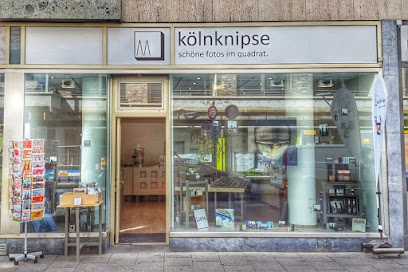
UNIQLO Köln
0.2 km
Explore stylish and affordable fashion at UNIQLO Köln, where contemporary design meets comfort in the heart of Cologne.

GALERIA Kaufhof
0.2 km
Dive into a shopping haven at GALERIA Kaufhof, Cologne's premier department store, featuring a diverse range of products in the heart of the city.
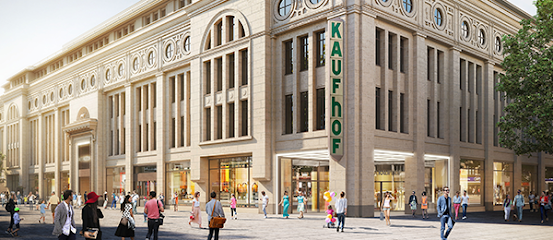
Casado Store
0.4 km
Discover the heart of Cologne's fashion at Casado Store, where style meets elegance and every piece is a statement.

BOGNER Köln
0.5 km
Explore BOGNER Köln - where luxury fashion meets contemporary style in the heart of Cologne.
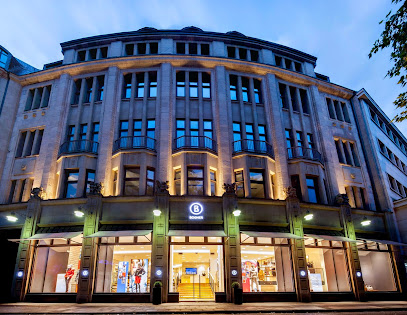
Elbenwald
0.5 km
Explore the enchanting Elbenwald gift shop in Cologne, where fantasy meets shopping with clothing, toys, and unique gifts for all ages.
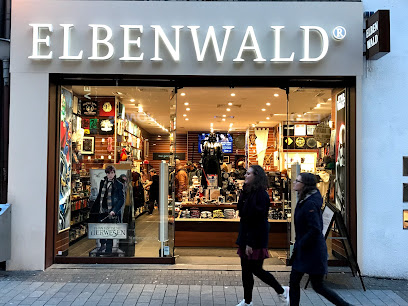
Manufactum Warenhaus
0.5 km
Explore the charm of Cologne at Manufactum Warenhaus, where quality gifts, clothing, and home goods await every discerning traveler.
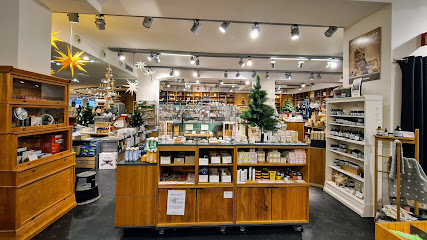
Close Up GmbH
0.5 km
Explore Close Up GmbH: Cologne's premier gift shop for unique posters and artistic treasures in the heart of the city.
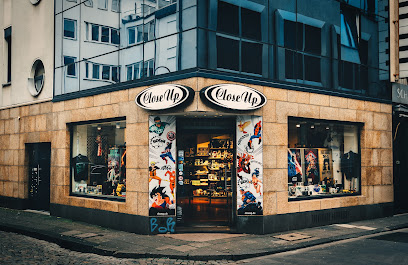
MUJI Cologne Store
0.5 km
Explore the MUJI Cologne Store for a unique selection of minimalist products that blend functionality with style, right in the heart of the city.
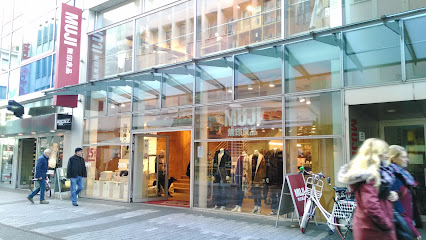
Pylones
0.5 km
Explore Pylones in Cologne for unique gifts and home goods, filled with creativity and playful designs to brighten your day.

Früh Shoppen
0.6 km
Explore Früh Shoppen in Cologne for a delightful shopping experience filled with local treasures and unique finds.
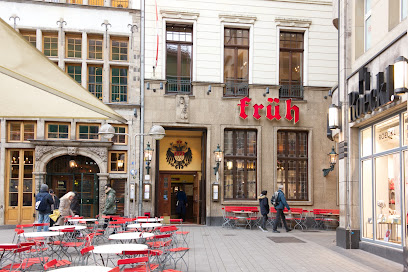
BVLGARI
0.6 km
Explore BVLGARI in Cologne for an exquisite range of luxury jewelry, fashion accessories, and timeless leather goods in a sophisticated setting.
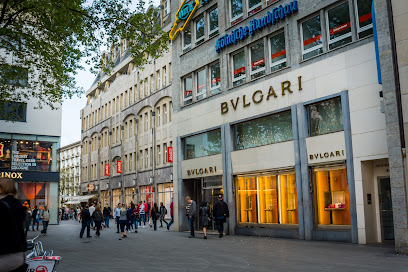
Victorinox Store Köln
0.6 km
Discover Swiss quality at the Victorinox Store in Cologne, featuring iconic knives, stylish luggage, and exclusive apparel in a modern shopping atmosphere.
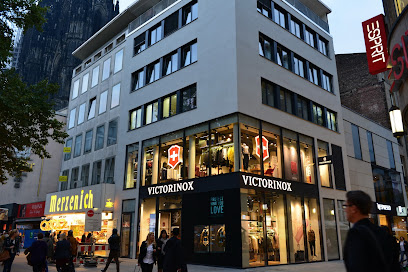
G-Star RAW Store
0.7 km
Explore the G-Star RAW Store in Cologne for premium denim and stylish fashion, perfect for elevating your wardrobe with contemporary designs.
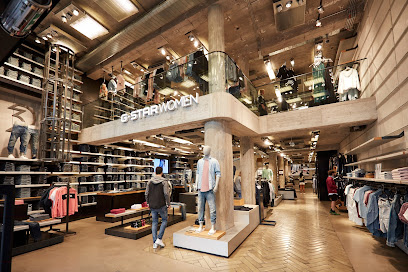
Opern Passagen
0.7 km
Explore the dynamic shopping experience at Opern Passagen, Cologne's premier shopping destination with diverse shops and delightful dining options.
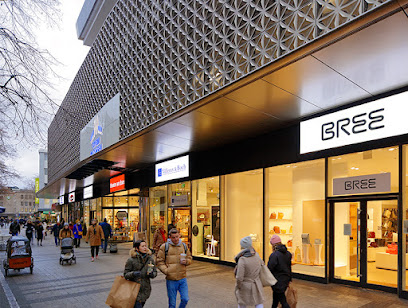
Essential bars & hidden hideouts
The Copper Pot - Köln
0.3 km
Experience Irish hospitality at The Copper Pot in Cologne, where lively ambiance, delicious cocktails, and live music await every visitor.
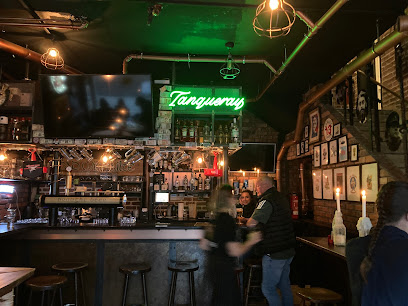
Piano Bar
0.3 km
Discover the enchanting Piano Bar in Cologne, where signature cocktails, live music, and a chic atmosphere create a perfect nightlife experience.
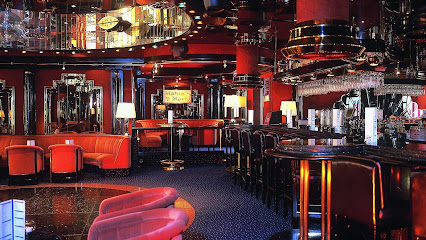
Papa Rudis - Köln
0.4 km
Discover the lively atmosphere and local brews at Papa Rudis, Cologne's must-visit pub for a memorable night out.
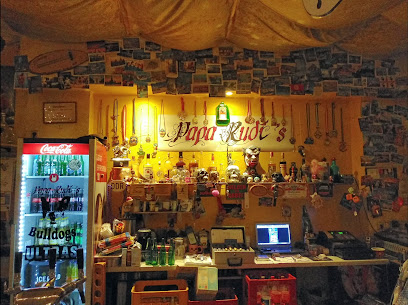
Sonderbar - Köln
0.5 km
Experience the best local brews and a vibrant atmosphere at Sonderbar, a must-visit bar in the heart of Cologne.
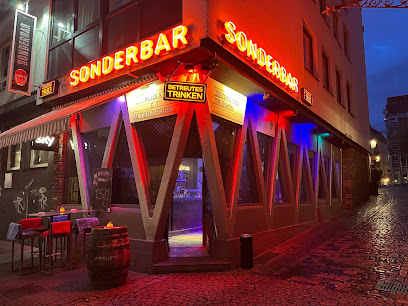
Papa Joe's Biersalon
0.5 km
Experience the vibrant pub culture of Cologne at Papa Joe's Biersalon, where great beer and hearty meals await in a lively atmosphere.
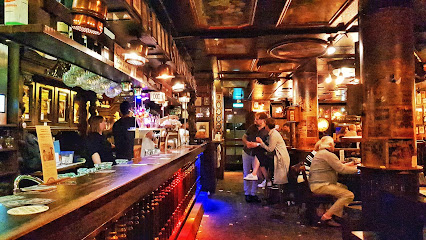
The Corkonian Irish pub
0.5 km
Experience the heart of Ireland at The Corkonian Irish Pub in Cologne, where traditional food, drinks, and live music create unforgettable memories.

Barney Vallely's
0.5 km
Discover the essence of Ireland at Barney Vallely's, a lively pub in Cologne with authentic food, drinks, and vibrant entertainment.

Bierbaum
0.5 km
Discover the lively Bierbaum bar in Cologne, where great drinks and a welcoming atmosphere blend seamlessly for an unforgettable night out.
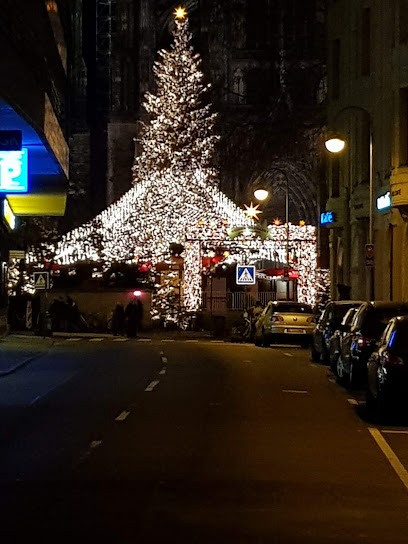
BAR BOTANIK
0.6 km
Discover BAR BOTANIK in Cologne, where lush botanical decor meets expertly crafted cocktails for an unforgettable nightlife experience.

die kunstbar
0.8 km
Discover Die Kunstbar in Cologne: A vibrant bar blending art, music, and delicious drinks in the heart of the city’s nightlife.
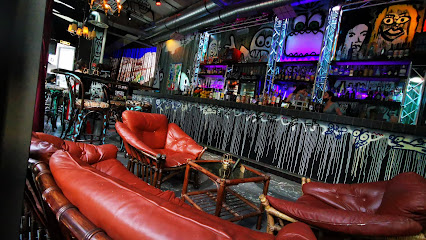
Legends Bar & Terrasse
1.0 km
Experience the ultimate cocktail bar in Cologne with stunning Rhine views, sophisticated atmosphere, and expertly crafted drinks at Legends Bar & Terrasse.
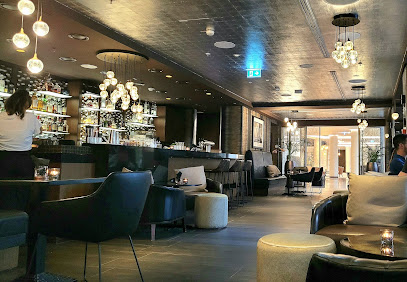
BON-Brauhaus ohne Namen
1.1 km
Experience the heart of Cologne's craft beer culture at BON-Brauhaus ohne Namen, a brewpub offering unique brews and delicious bites in a cozy setting.
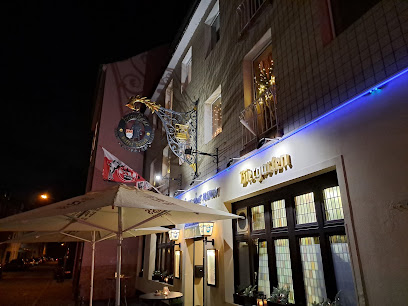
im Schnörres
1.1 km
Discover the vibrant nightlife of Cologne at im Schnörres, where delicious drinks and a lively atmosphere await you.
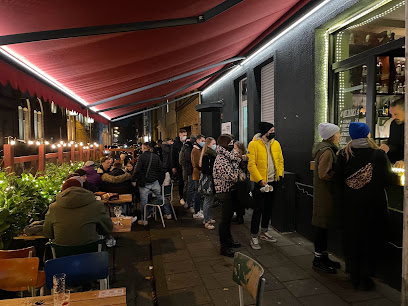
Plüsch Bar & Lounge (im Köln Marriott Hotel)
1.2 km
Experience luxury and relaxation at Plüsch Bar & Lounge in Cologne, where exquisite cocktails and elegant ambiance await you.
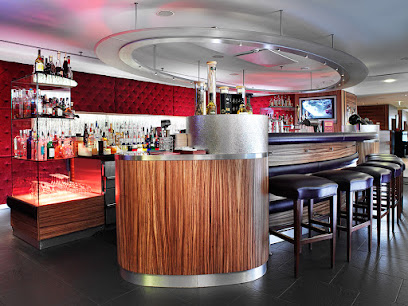
Iron Cocktail Lounge
1.2 km
Discover the vibrant cocktail culture of Cologne at Iron Cocktail Lounge, where expertly crafted drinks meet a stylish ambiance.




